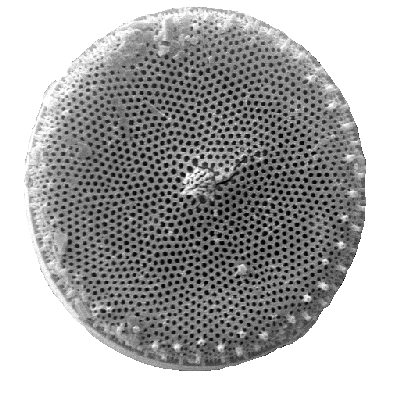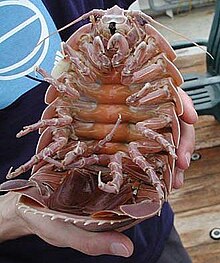
Phytoplankton - Diatom
A form of microscopic photosynthetic algae, Diatom float through the ocean in microscopic clouds. They have no means of moving themselves but due to photosynthesis have very little means to do so. They provide the base tier of food even for other phytoplankton.
Zooplankton - Crystal Jelly
The bioluminescent Aequorea Victoria is a deepsea jelly is a transparent light blue variant that appears colorless in the blue waters it is usually seen swimming in. Like most jellyfish the crystal jelly has a distributed nervous system and paralytic tentacles. The crystal jelly's only known predator is the lion's mane jelly. Crystal jelly's blue photosynthetic light is transfored into green light by green photosynthetic protein, which is an important tool in the field of biology.

Aquatic macrophyte - Nelumbo (Lotus Flower)
The Lotus appears as a single flower with a variety of leaves attached by underwater vines. The leaves are solid enough for light animals like frogs and insects to stand on without the leaves going underwater. The Lotus regulates it's temperature so that insects will come to polinate it. The Lotus leaves have a special quality that causes water to stand on top of them in drop form, sometimes referred to as the lotus effect.

Fish - The Deep-Sea EelpoutRelatively new to discovery, not much is known about the deep-sea eelpout [Pachycara Priedei]. Uniformally bright pink and semi-translucent, the eelpout has small eyes which are not used for seeing but for picking up the bioluminescent signals that other deep-sea species tend to display. It's large humped nose is it's primary means of detection and is used to sense the movement of prey and predators in the deep. The deep-sea eelpout feeds mainly off of crustaceans that feed off of the carcases of large sea-mammals such as whales or large sharks.

Crustacean - Giant Isopod
First discovered in 1879, the GI usually measures in between 7.5 and 14 in. with a maximum weight of 3.7 lb and length of 30". They are carnivorous and feed on dead matter and also slow moving species like corral, sponges, and sea anemones.

Mammal - Leopard Seal
Generally a mixture of dark gray and black in color and by design incredibly muscular the Leopard seal weighs in at between 440 and 1000 lb. The leopard seal is an apex predator that generally has a diet consisting of fish and penguins, but the leopard seal will eat anything slow enough for it to catch and big enough to be worth the effort, though it needs to be mentioned that the leapard seal's teeth are of a special design to also allow the creature to sift krill.

No comments:
Post a Comment